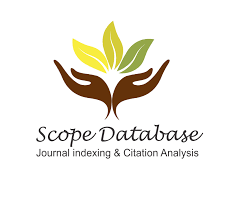Details
Material Lifespan Predictor
Kisna Patel
Grade 12, National Senior Certificate (NSC) Candidate Worcester Gymnasium High School Worcester, South Africa
Download PDF http://doi.org/10.37648/ijrst.v15i04.004
http://doi.org/10.37648/ijrst.v15i04.004
Abstract
Predicting the operational lifespan of industrial components remains a critical challenge in manufacturing, where early failure leads to costly downtime and waste. This study addresses that problem by applying machine learning to estimate the lifespan of materials based on manufacturing process parameters and alloy composition. The dataset comprises 1,000 samples containing attributes such as component type, microstructure, cooling and heat-treatment parameters, alloy percentages, and defect counts. Seven regression models were developed and compared—Linear Regression, Polynomial Regression, Random Forest, XGBoost, Support Vector Regression, CatBoost, and LightGBM—using standardized numeric features and one-hot encoded categorical variables. Model performance was evaluated through mean squared error (MSE), mean absolute percentage error (MAPE), and the coefficient of determination (R²). Tree-based ensemble methods achieved superior results, with LightGBM delivering the best performance (MSE = 3757.36, MAPE = 4.13%, R² = 0.964). SHAP explainability analysis revealed that cooling rate, alloy composition, and defect counts were the most influential features. These findings demonstrate that gradient boosting ensembles, combined with explainability techniques, can provide accurate and interpretable predictions for material lifespan optimization in manufacturing environments.
Keywords: Machine Learning; Material Lifespan; Regression Models; SHAP; Manufacturing
References
- Botchkarev, A. (2018). Performance metrics (error measures) in machine learning regression, forecasting and prognostics: Properties and typology. arXiv. https://doi.org/10.48550/arXiv.1809.03006
- Chen, T., & Guestrin, C. (2016). XGBoost: A scalable tree boosting system. Proceedings of the 22nd ACM SIGKDD International Conference on Knowledge Discovery and Data Mining, 785–794. https://doi.org/10.1145/2939672.2939785
- Ghatnekar, A., & Shanbhag, A. D. (2021). Explainable, multi-region price prediction. In 2021 International Conference on Electrical, Computer and Energy Technologies (ICECET) (pp. 1–7). IEEE. https://doi.org/10.1109/ICECET52533.2021.9698641
- Kaggle. (n.d.). Material Lifespan Prediction Dataset. Retrieved October 27, 2025, from https://www.kaggle.com/code/talhafazal07/data-analysis-project-1/input
- Ke, G., Meng, Q., Finley, T., Wang, T., Chen, W., Ma, W., Ye, Q., & Liu, T.-Y. (2017). LightGBM: A highly efficient gradient boosting decision tree. Advances in Neural Information Processing Systems, 30. https://arxiv.org/abs/1706.09516
- Lundberg, S. M., & Lee, S.-I. (2017). A unified approach to interpreting model predictions. Advances in Neural Information Processing Systems, 30. https://arxiv.org/abs/1705.07874
- Pedregosa, F., Varoquaux, G., Gramfort, A., Michel, V., Thirion, B., Grisel, O., Blondel, M., Müller, A., Nothman, J., Louppe, G., Prettenhofer, P., Weiss, R., Weiss, R. J., Vanderplas, J., Passos, A., Cournapeau, D., Brucher, M., Perrot, M., & Duchesnay, É. (2011). Scikit-learn: Machine learning in Python. Journal of Machine Learning Research, 12, 2825–2830. https://jmlr.org/papers/v12/pedregosa11a.html
- Prokhorenkova, L., Gusev, G., Vorobev, A., Dorogush, A. V., & Gulin, A. (2018). CatBoost: Unbiased boosting with categorical features. Advances in Neural Information Processing Systems, 31. https://arxiv.org/abs/1706.09516











